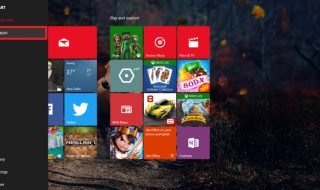There are literally thousands of internet service providers operating in the US today. There are choices for fixed and wireless broadband, cable, and mobile data. Internet users have numerous options for streaming TV and movies. Video game fans can watch other gamers on Twitch and YouTube playing games online. And content can be conveniently downloaded negating the need to make an in-store purchase.
All of this has led to most people taking the internet and WiFi and broadband for granted. After all, when you can access your favorite websites from your phone any time of day or night, and from anywhere, why would you imagine that some people are still struggling just to get a stable connection?
Contents
What areas in the US struggle to access the internet?
The US is a vast nation measuring over 3.5 million square miles. Not surprisingly then the country has huge swathes of rural and remote areas. In fact, the majority of the US is classified as rural.
Many rural areas have problems with internet access. Gamers living in these regions would have problems playing online, but farmers need access to the internet, too. Remote workers, businesses, and anyone who simply wants to browse the net are all experiencing frustrating download speeds.
Every state in the US has broadband access, with some enjoying much faster speeds than others. But, there are plenty of counties and regions that struggle to reach close to the defined broadband speed of 25 Mbps.

Kentucky is one of the heavily rural states and has had problems with broadband speeds in some remote areas. The Site Selectors Guild put Kentucky in the top six for talent attraction in 2021. However, many people working in rural parts of Kentucky have struggled to get high-speed access to the net which makes conducting business online difficult.
What options do workers in rural areas have?
All of this isn’t to say that it’s impossible to use the internet in rural areas. In many remote regions, 4G mobile broadband may be an option, and fiber and DSL may be available too. But satellite broadband is for some the only option and this is often available in areas where there is no other choice.
Unfortunately for Alaskans, even satellite broadband doesn’t have full coverage there. There are also some negatives to satellite internet services.
One is that the connections often have high latency or high ping rates. VPNs can not usually be used with satellite broadband, and if you can use one it can potentially slow your connection by up to 70%.
Satellite broadband is also a more expensive option than other internet services.
What is the best way to access broadband in a rural area?
Fortunately, many companies are working to fix internet access issues in remote areas. By picking a rural network provider who understands the issues facing people living and working in remote areas, you are more likely to receive a service that meets your requirements.
Choosing a rural network provider that is locally owned and established can be even more beneficial as they themselves will be living and operating in the region.
Some ISPs are actively investing in building fiber and improving local infrastructure for internet services. Redundant systems help to provide a more stable connection with increased up-time.
Are there any signs that internet speeds in rural areas will improve?
Internet usage across the states has increased over the last few years. The pandemic saw a rise in individuals using the net for a variety of purposes from online shopping to business.
For many that spend too much time online it may be time for a digital detox, but spare a thought for those who can’t even get broadband and struggle to connect to websites at all.
Fortunately, there are many positive signs that things are being taken seriously at both state and federal levels. Not only are some ISPs seeing the value of investing in rural areas, but the government does too.
Not having broadband access can impact negatively in many ways. Students can struggle to access the resources they need, and businesses can miss out too. Marketing strategies boost sales but without broadband to assist, digital marketing is impossible.
Washington has pledged $400 million to provide rural neighborhoods with fast internet access. This could help to revitalize some areas and create jobs and allow businesses to run more efficiently. The Affordable Connectivity Program should also help lower-income families to be able to subscribe to broadband services.
Summary
Connecting to the internet in rural areas can often be frustrating and unrewarding. However, options such as satellite broadband can help to provide access in these areas as could 4G mobile broadband if connectivity is possible.
But, the best option for individuals and businesses in remote areas may be to find a rural network provider. They should understand the unique problems faced by these communities, and offer transparency with their download speeds instead of false promises.



